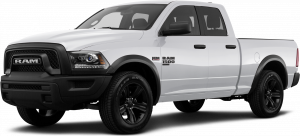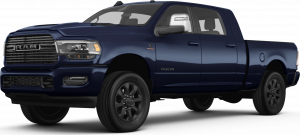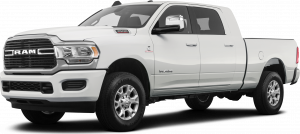"Is it time to switch to winter tires?" It's a familiar question—facing down unpredictable elements and slippery streets that test our nerves and driving skills.
And let's face it, in places like Canada where strapping on winter tires is sometimes less a suggestion and more a legal must-do within certain dates, figuring out the timing isn't just smart—it's essential.
This guide is your trusty co-pilot, packed with insights on finding that tire-swap sweet spot so you can navigate Jack Frost's grip with confidence. Buckle up; we're about to cruise into safer winter travels together!
See also how long do winter tires last?

When to Change to Winter Tires in Canada
Navigating Canadian winters means being prepared, and a key part of that preparation is knowing when to equip your vehicle with winter tires. While the right time can vary by province and territory, we'll guide you through the specific dates and regional regulations so you can ensure optimal safety and performance on those icy roads.
By province and territory
We understand the importance of knowing the right time to switch to winter tires for optimal safety and performance on the road. In Canada, the timing can vary by province and territory due to the different climate conditions each region faces. Here's a handy guide to help you determine when to change your winter tires based on where you live:
| Province/Territory | Mandatory Period | Recommended Changeover Time |
|---|---|---|
| British Columbia | October 1 - March 31 (Mountainous regions) | When temperatures consistently drop below +7°C |
| Alberta | Not mandatory | Mid-October or when snowfall is expected |
| Saskatchewan | Not mandatory | Early November or with the first snow |
| Manitoba | Not mandatory | Early October to avoid the first frost |
| Ontario | Not mandatory | Mid-November or before the first snowfall |
| Quebec | December 1 - March 15 | By December 1st to comply with legal requirements |
| Newfoundland and Labrador | Not mandatory | Early November or with persistent frost |
| New Brunswick | Not mandatory | Mid-November or after the first snowfall |
| Nova Scotia | Not mandatory | Early December or with the first winter storm |
| Prince Edward Island | Not mandatory | After the first heavy frost, typically late October |
| Yukon | Not mandatory | By October or with the first snow |
| Northwest Territories | Not mandatory | Before October to be prepared for early snow |
| Nunavut | Not mandatory | Due to severe weather, early September is advisable |
As we share this information, we also remind ourselves of the crucial role winter tires play in keeping us safe. Winter tires are not just a legal requirement in some areas but a critical safety feature that provides improved traction and handling in cold weather.
We always recommend switching your tires when the average daily temperature falls below +45°F (+7°C) to maintain the best performance of your vehicle. By doing this, we contribute to safer roads for everyone and potentially save on long-term costs by preventing wear and tear on our summer or all-season tires.
Let's always prioritize our safety by choosing and maintaining the right winter tires for our vehicles.
How to Determine When Your Winter Tires Need Replacing
Understanding when to replace your winter tires is key, as worn-out treads can significantly compromise your vehicle's grip on icy roads – stay tuned for the essential signs that indicate it's time for a change.
Checking tread depth
We know checking the tread depth of your winter tires is essential for safe driving in snow and ice. Proper tread depth ensures you have the necessary traction to navigate winter road conditions.
- Grab a quarter to measure your tire's tread depth.
- Insert the edge of the coin into the tire tread, with the caribou's nose going in first.
- If you can see all of the caribou's nose, your tires are too worn and need replacing.
- Aim for at least 4.8 millimeters (6/32 inches) of tread for optimal snow traction.
- Check multiple spots to ensure even wear across the tire.
- Inspect the treads before winter hits and regularly throughout the season.
- Look out for uneven wear patterns, which could indicate alignment issues.
Signs of damage
Checking your winter tires regularly for damage is key to ensuring your safety on the road. Let's identify some common signs that suggest your winter tires may need replacing:
- Visible cracks or cuts in the sidewall can weaken the structure of the tire, making it more susceptible to a blowout.
- Bulges or blisters on the tire surface are often indicators of an internal problem and signal that the tire could fail at any moment.
- Irregular tread wear suggests alignment issues or improper inflation, which affect vehicle handling and tire life.
- Punctures, nails, or debris embedded in the tire compromise its integrity; even if plugged, these tires are not as reliable.
- If you notice a significant decrease in traction during winter conditions, this could be a sign that your tire's tread has worn down too much.
- Fabric or cord showing through the rubber means the tire is dangerously worn and needs immediate replacement to ensure safety and performance.
The Benefits of Winter Tires
Winter tires aren't just rubber for the road; they're your trusty allies against the icy grip of winter, offering unmatched safety and stability when you need it most—keep reading to discover how they can elevate your cold-weather driving experience.

Improved traction and handling
We all want a safe and reliable ride, especially during those icy months. Our winter tires are designed to grab onto snowy roads like no other. The secret is in the rubber compound that stays soft even when temperatures plunge below freezing.
This flexibility allows the treads to conform to uneven surfaces, providing unmatched stability.
Imagine driving with confidence around every curve and corner, regardless of slush or frost. Good winter tires can make that happen by enhancing your vehicle's grip on the road. They prevent sliding and skidding so you can handle your car with precision.
With proper installation and regular maintenance, you'll notice an immediate improvement in your driving experience—the kind of control that only peak-performing winter tires can deliver.
Better safety in harsh winter conditions
Winter tires are a game-changer when it comes to navigating the treacherous roads of Canadian winters. They're designed specifically for cold weather, providing that essential grip needed on icy or snowy surfaces.
These tires maintain their elasticity even in extreme cold, ensuring that we have better control over our vehicle and can stop more quickly if necessary.
With proper winter tires fitted onto our cars, we boost our chances of arriving safely at our destinations during the rough winter months. Their enhanced traction is crucial for staying on course and avoiding slips and slides that all-season tires might not handle as well.
It's about being proactive—equipping ourselves with the best tools to face whatever challenges icy roads may throw at us ensures we don't just rely on luck for road safety during these harsh conditions.
Long-term cost savings
Investing in quality winter tires can lead to substantial savings over time. While it might seem like a significant upfront cost, the right set of tires extends the life of your everyday tires since you'll be switching them out for part of the year.
This reduces wear and tear on both sets and means less frequent replacements. Moreover, good winter tires improve fuel efficiency by providing better traction, which translates to fewer dollars spent at the gas pump during those cold months.
We also save on potential costs from accidents that could result from inadequate tire performance in harsh conditions. Properly equipped with winter tires, we reduce our risk of collisions that could lead to expensive repairs or increases in insurance premiums.
The safety benefits are clear, but the bonus is keeping more money in our pockets over time while tackling icy roads confidently.
Tips for Choosing and Maintaining Winter Tires

In our pursuit of winter readiness, selecting the right kind of winter tires becomes paramount for ensuring optimal performance and safety on icy roads. We'll share insights into making informed choices and highlight the best practices for maintaining them throughout the cold season, keeping your driving experience both safe and enjoyable.
Recommended brands
We know choosing the right winter tires can be tricky, but some brands consistently deliver top-notch performance and reliability. Brands like Michelin, Bridgestone, and Goodyear offer various models that provide excellent traction on ice and snow.
Their tires are designed to maintain flexibility in cold temperatures below +7°C (+45°F), ensuring better grip when you're navigating slippery winter roads.
You'll also find great options with Continental and Pirelli, known for their high-quality materials that help ensure vehicle handling stays precise in harsh conditions. Opting for these reputable brands means investing in your safety and optimizing your car's performance during the season when road hazards are most unpredictable.
Make sure to check each brand's specific tire models to match them with your vehicle's requirements and driving habits for the best outcome on those icy streets.
Proper installation and maintenance
After selecting the right winter tires that meet your needs and the region's regulations, it's crucial to ensure they're installed and maintained correctly for peak performance. Proper installation maximizes safety and extends the life of your tires throughout the winter season.
- Always have a professional install your winter tires. Trained technicians will mount and balance them accurately, which is vital for vehicle handling and road safety.
- Check tire pressure monthly. Cold weather affects tire pressure, so regular checks will maintain proper inflation levels and prevent uneven wear.
- Rotate your tires as recommended. This helps achieve uniform wear and extends tire life; usually every 6,000 to 8,000 miles or according to manufacturer guidelines.
- Inspect your tires regularly for signs of damage or wear. Look out for cracks or bulges in the sidewall, which indicate immediate replacement is necessary.
- Store your off-season tires in a cool, dry place. UV rays and heat can degrade rubber over time; keeping them indoors will protect them from these elements.
- Realign wheels when swapping out seasonal tires. This ensures even tread wear and optimal driving stability - remember to do this twice yearly.
- Keep an eye on tread depth to determine when it's time to replace your winter tires. A tread depth less than 4/32 inch means it's time for new ones to maintain proper snow traction.
When to Remove Winter Tires

As spring approaches, many drivers wonder about the right time to remove their winter tires. Here are some key factors to consider:
Temperature Consistency
The primary indicator for removing winter tires is consistent temperatures above 7°C (45°F). This is because winter tire compounds are designed to remain flexible in cold temperatures, but can wear quickly in warmer conditions.
Regional Considerations
- In most parts of Canada, it's typically safe to remove winter tires in late March or early April.
- However, in mountainous regions or areas prone to late-season snow, you might want to wait until late April or even early May.
- Always check your local weather forecasts and long-term predictions before making the switch.
Legal Requirements
If your province has mandatory winter tire laws, make sure you're aware of the end date for the requirement. For example, in Quebec, winter tires are mandatory until March 15th.
Gradual Transition
If you're unsure about the weather stability, consider a gradual transition:
- Remove winter tires from the drive wheels first (front wheels for front-wheel drive, rear wheels for rear-wheel drive).
- Replace these with all-season or summer tires.
- Keep winter tires on the non-drive wheels for an additional week or two if you're concerned about unexpected weather changes.
Storage Considerations
Once you've removed your winter tires:
- Clean them thoroughly before storage.
- Store in a cool, dry place away from direct sunlight and heat sources.
- Consider using tire bags to protect them from dust and debris.
- Store them either standing upright or stacked horizontally, but avoid hanging as this can cause deformation.
Professional Advice
If you're still unsure about the right time to remove your winter tires, don't hesitate to consult with a professional at your local tire shop or dealership. They can provide advice based on your specific vehicle and local climate conditions.
Remember, removing your winter tires at the right time not only ensures your safety but also extends the life of both your winter and summer tires, providing better value for your investment in the long run.
Also check our Saint Albert, RAM Dealership





















